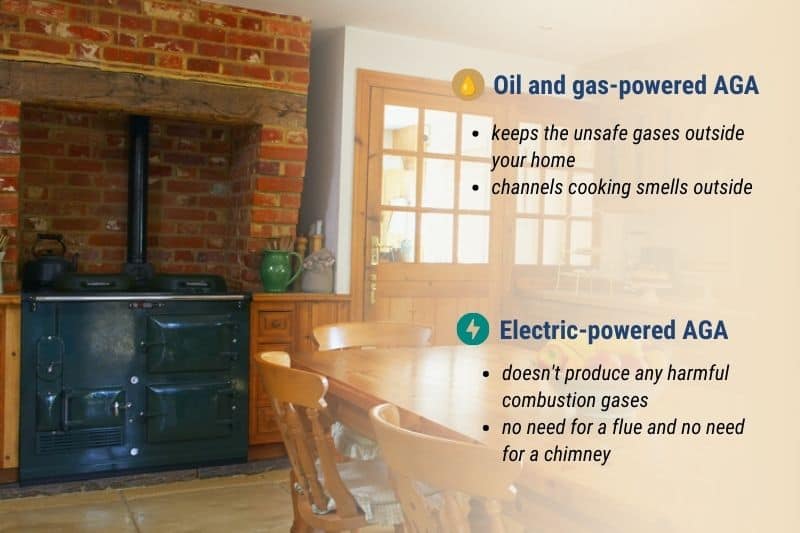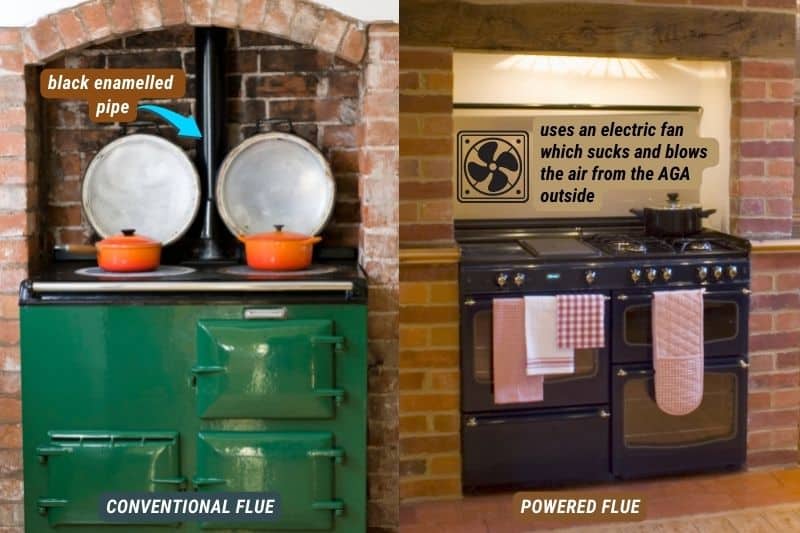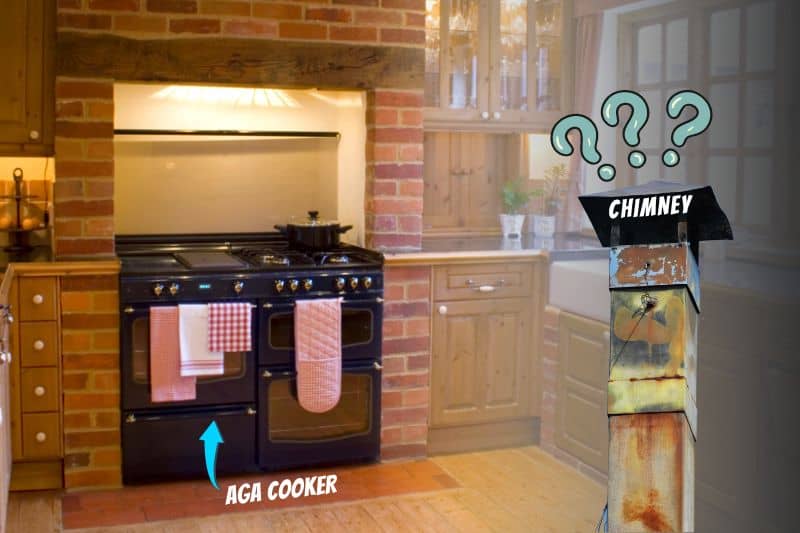Anyone with an AGA cooker has likely heard of the term “flue”.
A flue is essentially a small chimney through which all products of combustion are exhausted.
This removes these harmful products and gases from the burner so that the air inside the kitchen is safe to breathe, while also removing cooking odours so the air in your home maintains its freshness.
The flue is usually connected to a masonry chimney that exhausts the air outside your home.
But do you need a chimney for an AGA? Or can you install one of these appliances without a chimney in your home?
This depends on the type of flue we are talking about, and whether or not you have a gas, oil or electric AGA.
Does an AGA Need a Flue?

Most AGAs need a flue, which is true for all oil and gas models. As mentioned, the flue acts as an avenue for the products made when combusting oil or gas to escape.
They need to have this connection with the outside world to keep the unsafe gases produced during combustion safely outside your home.
They also channel cooking smells outside so the air in your house stays fresh.
However, this is not the case with all AGAs. Some modern designs are powered by electricity rather than gas or oil.
These types of AGA don’t produce any harmful combustion gases—they run on electricity instead. Therefore, there is no need for a flue and no need for a chimney.
With that said, most electric AGAs will have a ventilation pipe to remove cooking smells. This usually runs from the back of the oven and into a fan box.
Conventional Flues vs. Powered Flues

There are two different types of flues used in AGAs. These are known as “conventional” flues and “powered” flues.
All oil AGAs need to have a conventional flue installed, whereas gas AGAs can have either a conventional or powered flue.
Conventional flues are typically linked to a masonry chimney. From the AGA, you will see a black enamelled pipe that usually connects to a fireplace and rises up in the chimney.
The gases and other combustion products rise through this channel and out through a chimney stack on the roof. In these cases, a chimney is a necessity.
On the other hand, a powered flue does not need to be connected to a chimney. These flues are powered by an electric fan which sucks and blows the air from the AGA outside.
As this model relies on the blow of a fan rather than the natural rising current of gases, they can run horizontally.
Therefore, the piping can run through any wall in your home horizontally and exit this way, rather than up through a chimney.
Do AGAs Need Chimneys?
So, does an AGA need a chimney? If you have an electric AGA, the answer is no.
These types of cookers don’t even need a flue! All they need is a simple ventilation pipe connected to a fan box, much like a conventional oven.
Similarly, gas ovens with powered flues don’t require a chimney and can run horizontally through an external wall instead.
On the other hand, gas and oil AGAs with conventional flues do generally require a chimney stack. This is used as a passage from which dangerous combustion gases leave your home.
However, these conventional flues can also be created using a prefabricated “twin-wall flue system”.
This is a pipe made from stainless steel and a later of insulation which passes through floors, roofs, and walls to provide an exit route in the absence of a stack chimney.

Hannah is a freelance content writer and self-proclaimed foodie. When Hannah isn’t sitting tapping at her laptop, you’ll probably find her in the kitchen. As an ex-chalet host, she’s used to cooking four-course meals for 10+ people and loves feeding friends and family whenever possible.

